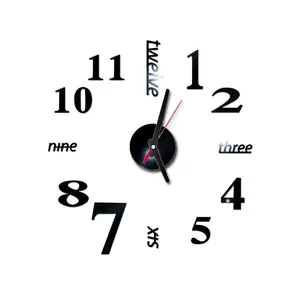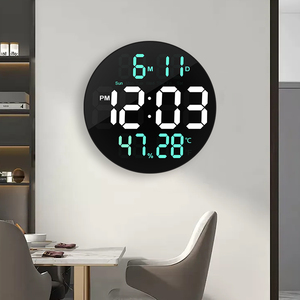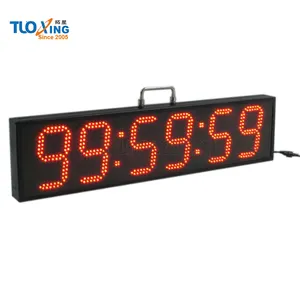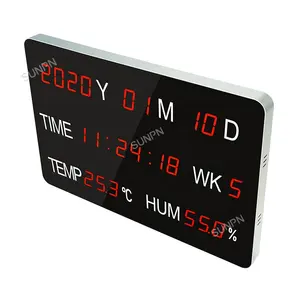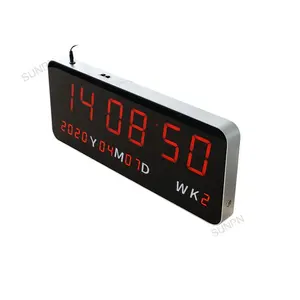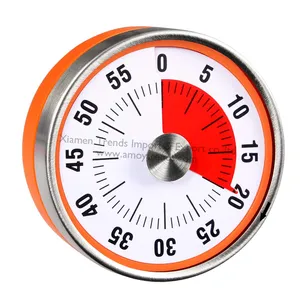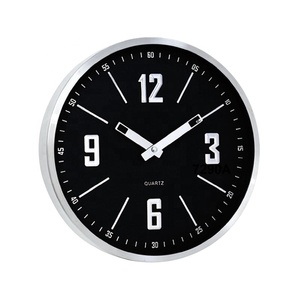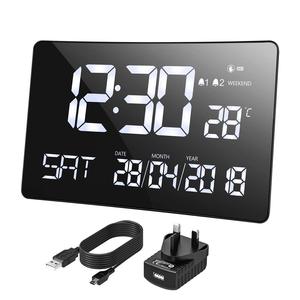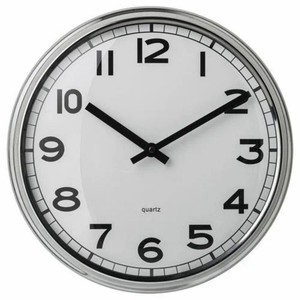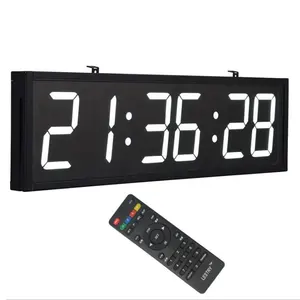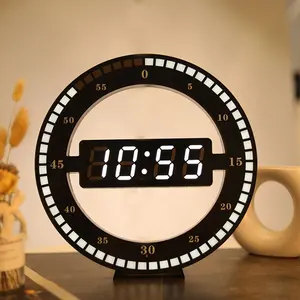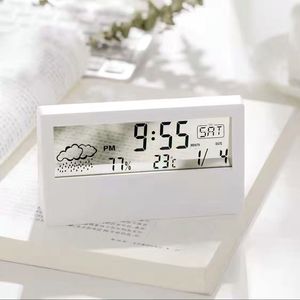Decimal Time







 1/15
1/15




 1/3
1/3





 1/1
1/1








 1/14
1/14












 1/3
1/3




 1/3
1/3




 1/3
1/3




 1/3
1/3




 1/3
1/3




 1/3
1/3












 1/3
1/3




 1/3
1/3










 1/45
1/45








 1/3
1/3





 1/3
1/3



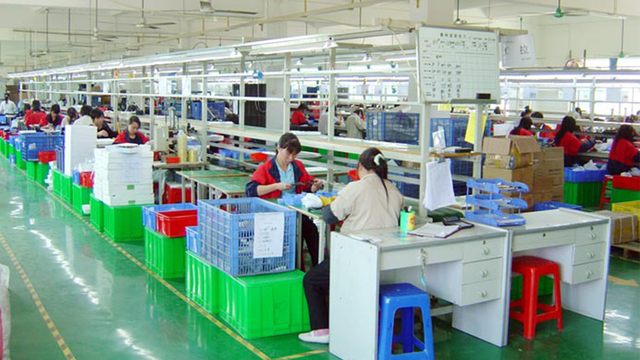

 1/3
1/3





 1/3
1/3
About decimal time
Where to Find Decimal Time Clock Suppliers?
China remains the central hub for decimal time clock manufacturing, with key production clusters in Zhejiang and Fujian provinces. These regions host vertically integrated supply chains that support both analog and digital timekeeping solutions, including specialized decimal time formats used in scientific, industrial, and educational applications. Zhejiang, particularly Hangzhou, is home to advanced electronics manufacturers equipped with SMT lines and precision assembly units focused on programmable digital displays. Fujian-based suppliers emphasize cost-effective mass production of wall clocks, desk clocks, and replacement components, leveraging economies of scale to deliver competitive pricing.
The industrial ecosystem enables rapid prototyping and flexible batch sizing, with many factories operating automated surface-mount technology (SMT) lines capable of producing 10,000+ units monthly. Component integration—such as LED/LCD modules, real-time clock (RTC) chips, and power management circuits—is typically handled in-house, reducing dependency on external vendors. This localized production model supports lead times averaging 15–25 days for standard orders and allows for customization in display format, housing material, and interface design. Buyers benefit from proximity to logistics hubs like Fuzhou and Ningbo ports, facilitating efficient global distribution via air or sea freight.
How to Choose Decimal Time Clock Suppliers?
Selecting reliable suppliers requires a structured evaluation across technical, operational, and transactional dimensions:
Technical Capabilities
Verify expertise in digital timing systems, particularly support for non-standard time formats such as decimal time (e.g., 10-hour day, 100-minute hour). Confirm access to programmable microcontrollers (e.g., ARM Cortex-M or ESP32 series) and firmware development capabilities for custom time algorithms. Suppliers should demonstrate experience with display technologies including 7-segment LED, VFD, or LCD, especially multi-digit configurations required for precise decimal time representation.
Production Capacity & Quality Assurance
Assess infrastructure through the following indicators:
- Minimum factory area of 2,000m² for sustained volume output
- In-house PCB assembly and testing facilities
- Compliance with ISO 9001 standards for quality management
Cross-reference on-time delivery rates (target ≥95%) and response times (ideally ≤4 hours) as proxies for operational reliability. Prioritize suppliers with documented QC processes, including burn-in testing and environmental stress screening.
Customization and Transaction Security
Ensure capability for OEM/ODM services, including custom enclosures, branding (logo, packaging), and user interface modifications. Require clear terms for tooling costs and IP protection. Utilize secure payment mechanisms such as escrow or Trade Assurance where available, and insist on pre-shipment inspection rights. Request functional samples to validate accuracy, display clarity, and build quality before full-scale ordering.
What Are the Best Decimal Time Clock Suppliers?
| Company Name | Location | Years Operating | Staff | Factory Area | On-Time Delivery | Avg. Response | Ratings | Reorder Rate |
|---|---|---|---|---|---|---|---|---|
| Hangzhou Yizhi Sports Goods Co., Ltd. | Zhejiang, CN | 6+ | 50+ | 3,000+m² | 95% | ≤2h | 4.8/5.0 | <15% |
| Fuzhou Faithreach Import And Export Co., Ltd. | Fujian, CN | 5+ | 30+ | 2,500+m² | 100% | ≤2h | 4.7/5.0 | 15% |
| Zhumadian Economic Development Zone Qianyuan Trading Co., Ltd. | Henan, CN | 4+ | 40+ | 4,000+m² | 99% | ≤4h | 4.9/5.0 | <15% |
| Fuzhou Lexinda Electronic Co., Ltd. | Fujian, CN | 7+ | 60+ | 3,800+m² | 96% | ≤5h | 4.8/5.0 | <15% |
| Hangzhou Cheetie Electronic Co., Ltd. | Zhejiang, CN | 8+ | 45+ | 3,200+m² | 100% | ≤6h | 4.9/5.0 | <15% |
Performance Analysis
Hangzhou Cheetie and Fuzhou Faithreach lead in on-time performance (100% delivery rate), indicating strong production planning and export coordination. Hangzhou-based firms exhibit higher specialization in electronic timepieces, offering multifunctional digital displays tailored for decimal time tracking. Fuzhou Faithreach stands out for low MOQs (as low as 60–100 pieces), making it suitable for niche market testing. Zhumadian Qianyuan reports the highest online revenue ($490,000+), suggesting robust sales volume and product diversity. While reorder rates remain below 15% for most suppliers—indicating limited repeat business—this may reflect the specialized nature of decimal time products rather than dissatisfaction. Buyers seeking customization should prioritize verified multispecialty suppliers with documented R&D capacity and sample validation procedures.
FAQs
How to verify decimal time clock supplier reliability?
Validate certifications such as ISO 9001 and compliance with RoHS or CE directives where applicable. Request evidence of product testing, including time accuracy calibration and electrical safety checks. Analyze supplier transaction history, focusing on consistent on-time delivery and responsiveness. Conduct video audits of production lines if physical visits are not feasible.
What is the typical minimum order quantity (MOQ)?
MOQs vary significantly by product type: digital decimal clocks range from 2–100 units, while component-level items (e.g., numerals, movement kits) may require 60–1,000 pieces. Some suppliers offer single-unit sampling at premium prices. Negotiate lower MOQs during initial engagement, especially for customized designs.
Can suppliers customize decimal time display formats?
Yes, many suppliers support firmware-level adjustments for non-standard time systems. Customization includes digit count (4–6 digits), display logic (e.g., 10-hour day conversion), brightness control, and backlight color. Confirm software development capabilities and request demo units before committing to bulk production.
What are common materials used in construction?
Housings are typically made from ABS plastic, aluminum alloy, or acrylic for durability and heat dissipation. Display faces use polycarbonate or tempered glass. Internal components include PCBs with quartz oscillators, RTC ICs (e.g., DS3231), and LED/LCD modules. Material selection impacts both aesthetics and environmental resilience, particularly for outdoor or industrial use.
How long does sampling and production take?
Sample creation typically takes 7–14 days for standard models. Custom designs with modified firmware or enclosures require 15–25 days. Mass production lead times average 20–30 days post-approval, depending on order size and complexity. Air freight adds 5–7 days for international delivery; sea freight ranges from 25–40 days based on destination.







